Bending Fatigue Behavior of 316L Stainless Steel up to Very High Cycle Fatigue Regime
Abstract
:1. Introduction
2. Experiment Procedures
2.1. Materials and Specimens
2.2. Ultrasonic Fatigue Test
3. Results
3.1. Test Results and Fractography
3.2. AFM Observations on the Surface after Fatigue
3.3. Observation of Surface Fatigue Crack Initiation
4. Discussions
4.1. The Role of Slip Bands in the Nucleation and Propagation of Small Cracks
4.2. The Effect of Grain Boundaries in the Nucleation and Propagation of Small Cracks
5. Conclusions
- Due to the stress gradient of the bending test, fatigue cracks all originate from the surface. At high cycles, fatigue cracks are initiated from multiple crack sources, while at very high cycles, fatigue crack is initiated from a single crack source.
- Small fatigue cracks tend to initiate at the slip band in the very high cycle bending fatigue regime. Due to the hindrance of the HAGBs to the dislocation movement, the accumulated plastic strain causes the crack initiation site to be near to the grain boundaries (or twin boundaries).
- The small crack propagation along or across the slip band, approximately 45° to the loading stress direction, is directly influenced by the grain orientations and boundaries.
- Under low-stress amplitude, failure does not occur because of the growth process of the slip bands. As the cycles increase, the growth rate of the extrusions decreases, and part of the intrusions are squeezed out by the gathering of the slip bands, leading to non-propagating small cracks.
Author Contributions
Funding
Acknowledgments
Conflicts of Interest
References
- Molak, R.; Paradowski, K.; Brynk, T.; Ciupinski, L.; Pakiela, Z.; Kurzydłowski, K.J. Measurement of mechanical properties in a 316L stainless steel welded joint. Int. J. Press. Vessel. Pip. 2009, 86, 43–47. [Google Scholar] [CrossRef]
- Song, M.; Wang, M.; Lou, X.Y.; Rebak, R.B.; Was, G.S. Radiation damage and irradiation-assisted stress corrosion cracking of additively manufactured 316L stainless steels. J. Nucl. Mater. 2019, 518, 461. [Google Scholar] [CrossRef]
- Turnbull, A.; Ryan, M.P.; Willetts, A.; Zhou, S. Corrosion and electrochemical behaviour of 316L stainless steel in acetic acid solutions. Corros. Sci. 2003, 45, 1051–1072. [Google Scholar] [CrossRef]
- Naoe, T.; Xiong, Z.; Futakawa, M. Gigacycle fatigue behaviour of austenitic stainless steels used for mercury target vessels. J. Nucl. Mater. 2016, 468, 331–338. [Google Scholar] [CrossRef] [Green Version]
- Xiong, Z.; Naoe, T.; Futakawa, M. Effect of Artificial Defects on the Very High Cycle Fatigue Behavior of 316L Stainless Steel. Metals 2019, 9, 412. [Google Scholar] [CrossRef] [Green Version]
- Masaki, K.; Ochi, Y.; Matsumura, T. Small crack property of austenitic stainless steel with artificial corrosion pit in long life regime of fatigue. Int. J. Fatigue 2006, 28, 1603–1610. [Google Scholar] [CrossRef]
- Jiao, S.; Gao, C.; Cheng, L.; Li, X.; Feng, Y. A Very High-Cycle Fatigue Test and Fatigue Properties of TC17 Titanium Alloy. J. Mater. Eng. Perform. 2016, 25, 1085–1093. [Google Scholar] [CrossRef]
- Wang, Q. Effect of inclusion on subsurface crack initiation and gigacycle fatigue strength. Int. J. Fatigue 2002, 24, 1269–1274. [Google Scholar] [CrossRef]
- Krupp, U. Fatigue Crack Propagation in Metals and Alloys. In Fatigue Crack Propagation in Metals and Alloys; Wiley: Hoboken, NJ, USA, 2007; pp. 1–287. [Google Scholar]
- Szczepanski, C.; Jha, S.; Larsen, J.; Jones, J. Microstructural Influences on Very-High-Cycle Fatigue-Crack Initiation in Ti-6246. Met. Mater. Trans. A 2008, 39, 2841–2851. [Google Scholar] [CrossRef] [Green Version]
- Mughrabi, H. Microstructural mechanisms of cyclic deformation, fatigue crack initiation and early crack growth. Philos. Trans. R. Soc. A Math. Phys. Eng. Sci. 2015, 373, 20140132. [Google Scholar] [CrossRef] [PubMed] [Green Version]
- Wang, C.; Wagner, D.; Wang, Q.; Huang, Z.; Bathias, C. Very high cycle fatigue crack initiation mechanism according to a 3D model of persistent slip bands formation in α-ferrite. Fatigue Fract. Eng. Mater. Struct. 2015, 38, 1324–1333. [Google Scholar] [CrossRef]
- Chen, Y.; He, C.; Yang, K.; Zhang, H.; Wang, C.; Wang, Q.; Liu, Y. Effects of microstructural inhomogeneities and micro-defects on tensile and very high cycle fatigue behaviors of the friction stir welded ZK60 magnesium alloy joint. Int. J. Fatigue 2019, 122, 218–227. [Google Scholar] [CrossRef]
- He, C.; Shao, X.; Yuan, S.; Fu, P.; Wu, Y.; Wang, Q.; Chen, Q. Small crack initiation and early propagation in an as-extruded Mg-10Gd-3Y-0.5Zr alloy in high cycle fatigue regime. Mater. Sci. Eng. A 2019, 744, 716–723. [Google Scholar] [CrossRef]
- Wilkinson, A.; Roberts, S. A dislocation model for the two critical stress intensities required for threshold fatigue crack propagation. Scr. Mater. 1996, 35, 1365–1371. [Google Scholar] [CrossRef]
- Krupp, U.; Alvarez-Armas, I. Short fatigue crack propagation during low-cycle, high cycle and very-high-cycle fatigue of duplex steel—An unified approach. Int. J. Fatigue 2014, 65, 78–85. [Google Scholar] [CrossRef]
- George, M.; Nziakou, Y.; Goerke, S.; Genix, A.-C.; Bresson, B.; Roux, S.; Delacroix, H.; Halary, J.-L.; Ciccotti, M. In situ AFM investigation of slow crack propagation mechanisms in a glassy polymer. J. Mech. Phys. Solids 2018, 112, 109–125. [Google Scholar] [CrossRef] [Green Version]
- Man, J.; Klapetek, P.; Man, O.; Weidner†, A.; Obrtlík, K.; Polák, J. Extrusions and intrusions in fatigued metals. Part 2. AFM and EBSD study of the early growth of extrusions and intrusions in 316L steel fatigued at room temperature. Philos. Mag. 2009, 89, 1337–1372. [Google Scholar] [CrossRef]
- Man, J.; Obrtlik, K.; Polak, J. Extrusions and intrusions in fatigued metals. Part 1. State of the art and history†. Philos. Mag. 2009, 89, 1295–1336. [Google Scholar] [CrossRef]
- Stocker, C.; Zimmermann, M.; Christ, H.-J. Localized cyclic deformation and corresponding dislocation arrangements of polycrystalline Ni-base superalloys and pure Nickel in the VHCF regime. Int. J. Fatigue 2011, 33, 2–9. [Google Scholar] [CrossRef]
- Man, J.; Vystavěl, T.; Weidner, A.; Kuběna, I.; Petrenec, M.; Kruml, T.; Polák, J. Study of cyclic strain localization and fatigue crack initiation using FIB technique. Int. J. Fatigue 2012, 39, 44–53. [Google Scholar] [CrossRef]
- Tofique, M.; Bergström, J.; Svensson, K.; Johansson, S.; Peng, R. ECCI/EBSD and TEM analysis of plastic fatigue damage accumulation responsible for fatigue crack initiation and propagation in VHCF of duplex stainless steels. Int. J. Fatigue 2017, 100, 251–262. [Google Scholar] [CrossRef]
- Zhang, Z.; Li, L.; Zhang, Z.; Zhang, P. Twin boundary: Controllable interface to fatigue cracking. J. Mater. Sci. Technol. 2017, 33, 603–606. [Google Scholar] [CrossRef]
- Chai, G.; Zhou, N. Study of crack initiation or damage in very high cycle fatigue using ultrasonic fatigue test and microstructure analysis. Ultrasonics 2013, 53, 1406–1411. [Google Scholar] [CrossRef] [PubMed]
- Al Shahrani, S.; Marrow, T.J. Influence of Twins on Short Fatigue Cracks in Type 316L Stainless Steel. Key Eng. Mater. 2011, 465, 507–510. [Google Scholar] [CrossRef]
- Krupp, U.; Knobbe, H.; Christ, H.-J.; Köster, P.; Fritzen, C.-P. The significance of microstructural barriers during fatigue of a duplex steel in the high- and very-high-cycle-fatigue (HCF/VHCF) regime. Int. J. Fatigue 2010, 32, 914–920. [Google Scholar] [CrossRef]
- Strubbia, R.; Hereñú, S.; Giertler, A.; Alvarez-Armas, I.; Krupp, U. Experimental characterization of short crack nucleation and growth during cycling in lean duplex stainless steels. Int. J. Fatigue 2014, 65, 58–63. [Google Scholar] [CrossRef]
- Bach, J.; Möller, J.J.; Göken, M.; Bitzek, E.; Höppel, H.W. On the transition from plastic deformation to crack initiation in the high- and very high-cycle fatigue regimes in plain carbon steels. Int. J. Fatigue 2016, 93, 281–291. [Google Scholar] [CrossRef]
- Zhang, J.; Li, S.; Yang, Z.; Li, G.; Hui, W.; Weng, Y. Influence of inclusion size on fatigue behavior of high strength steels in the gigacycle fatigue regime. Int. J. Fatigue 2007, 29, 765–771. [Google Scholar] [CrossRef]
- Grigorescu, A.; Hilgendorff, P.-M.; Zimmermann, M.; Fritzen, C.-P.; Christ, H.-J. Cyclic deformation behavior of austenitic Cr–Ni-steels in the VHCF regime: Part I—Experimental study. Int. J. Fatigue 2016, 93, 250–260. [Google Scholar] [CrossRef]
- Wang, Q.; Kawagoishi, N.; Chen, Q. Fatigue and fracture behaviour of structural Al-alloys up to very long life regimes. Int. J. Fatigue 2006, 28, 1572–1576. [Google Scholar] [CrossRef]
- Furuya, Y.; Hirukawa, H.; Takeuchi, E. Gigacycle fatigue in high strength steels. Sci. Technol. Adv. Mater. 2019, 20, 643–656. [Google Scholar] [CrossRef] [PubMed] [Green Version]
- Yang, K.; He, C.; Huang, Q.; Huang, Z.Y.; Wang, C.; Wang, Q.; Liu, Y.-J.; Zhong, B. Very high cycle fatigue behaviors of a turbine engine blade alloy at various stress ratios. Int. J. Fatigue 2017, 99, 35–43. [Google Scholar] [CrossRef]
- Liu, H.; Wang, H.; Huang, Z.; Wang, Q.; Chen, Q. Comparative study of very high cycle tensile and torsional fatigue in TC17 titanium alloy. Int. J. Fatigue 2020, 139, 105720. [Google Scholar] [CrossRef]
- Mineur, M.; Villechaise, P.; Méndez, J. Influence of the crystalline texture on the fatigue behavior of a 316L austenitic stainless steel. Mater. Sci. Eng. A 2000, 286, 257–268. [Google Scholar] [CrossRef]
- Polák, J. AFM evidence of surface relief formation and models of fatigue crack nucleation. Int. J. Fatigue 2003, 25, 1027–1036. [Google Scholar] [CrossRef]
- Mu, P.; Aubin, V.; Alvarez-Armas, I.; Armas, A. Influence of the crystalline orientations on microcrack initiation in low-cycle fatigue. Mater. Sci. Eng. A 2013, 573, 45–53. [Google Scholar] [CrossRef]
- Sistaninia, M.; Niffenegger, M. Fatigue crack initiation and crystallographic growth in 316L stainless steel. Int. J. Fatigue 2015, 70, 163–170. [Google Scholar] [CrossRef]
- Hamada, A.; Karjalainen, P.; Puustinen, J. Fatigue behavior of high-Mn TWIP steels. Mater. Sci. Eng. A 2009, 517, 68–77. [Google Scholar] [CrossRef]
- He, C.; Wu, Y.; Peng, L.; Su, N.; Chen, Q.; Yuan, S.; Liu, Y.; Wang, Q. Effect of microstructure on small fatigue crack initiation and early propagation behavior in Mg-10Gd-3Y-0.3Zr alloy. Int. J. Fatigue 2019, 119, 311–319. [Google Scholar] [CrossRef]
- Zhai, T.; Wilkinson, A.; Martin, J. A crystallographic mechanism for fatigue crack propagation through grain boundaries. Acta Mater. 2000, 48, 4917–4927. [Google Scholar] [CrossRef]
- Kamaya, M.; Kubushiro, K.; Sakakibara, Y.; Suzuki, S.; Morita, H.; Yoda, R.; Kobayashi, D.; Yamagiwa, K.; Nishioka, T.; Yamazaki, Y.; et al. Round robin crystal orientation measurement using EBSD for damage assessment. Mech. Eng. J. 2016, 3, 16-00077. [Google Scholar] [CrossRef] [Green Version]
- Gussev, M.; Leonard, K. In situ SEM-EBSD analysis of plastic deformation mechanisms in neutron-irradiated austenitic steel. J. Nucl. Mater. 2019, 517, 45–56. [Google Scholar] [CrossRef]
- Kim, W.; Laird, C. Crack nucleation and stage I propagation in high strain fatigue—II. mechanism. Acta Met. 1978, 26, 789–799. [Google Scholar] [CrossRef]
- Zhang, Z.; Wang, Z. Grain boundary effects on cyclic deformation and fatigue damage. Prog. Mater. Sci. 2008, 53, 1025–1099. [Google Scholar] [CrossRef]
- Bufford, D.; Liu, Y.; Wang, J.; Wang, H.; Zhang, X. In situ nanoindentation study on plasticity and work hardening in aluminium with incoherent twin boundaries. Nat. Commun. 2014, 5, 4864. [Google Scholar] [CrossRef] [PubMed] [Green Version]
- Wang, W.; Liu, T.; Cao, X.; Lu, Y.; Shoji, T. In-situ observation on twin boundary evolution and crack initiation behavior during tensile test on 316L austenitic stainless steel. Mater. Charact. 2017, 132, 169–174. [Google Scholar] [CrossRef]
- Rémy, L. The interaction between slip and twinning systems and the influence of twinning on the mechanical behavior of fcc metals and alloys. Met. Mater. Trans. A 1981, 12, 387–408. [Google Scholar] [CrossRef]
- Barbier, D.; Gey, N.; Allain, S.; Bozzolo, N.; Humbert, M. Analysis of the tensile behavior of a TWIP steel based on the texture and microstructure evolutions. Mater. Sci. Eng. A 2009, 500, 196–206. [Google Scholar] [CrossRef] [Green Version]
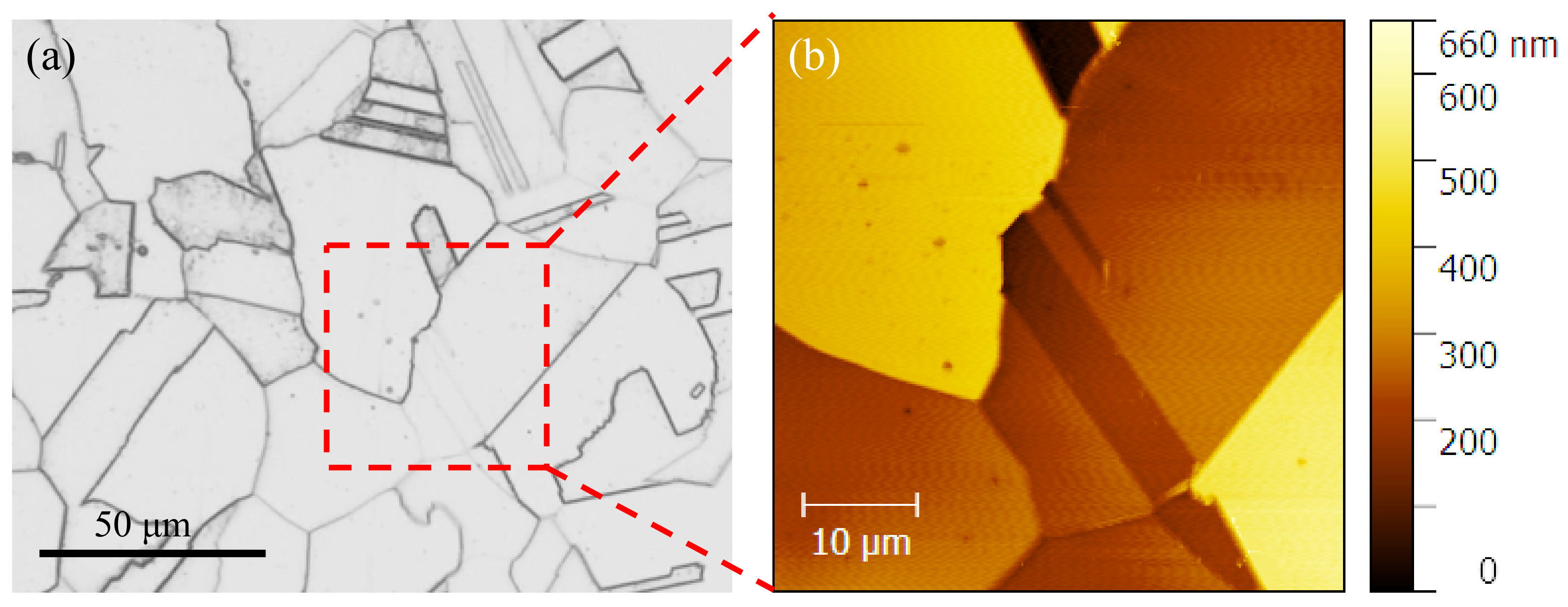
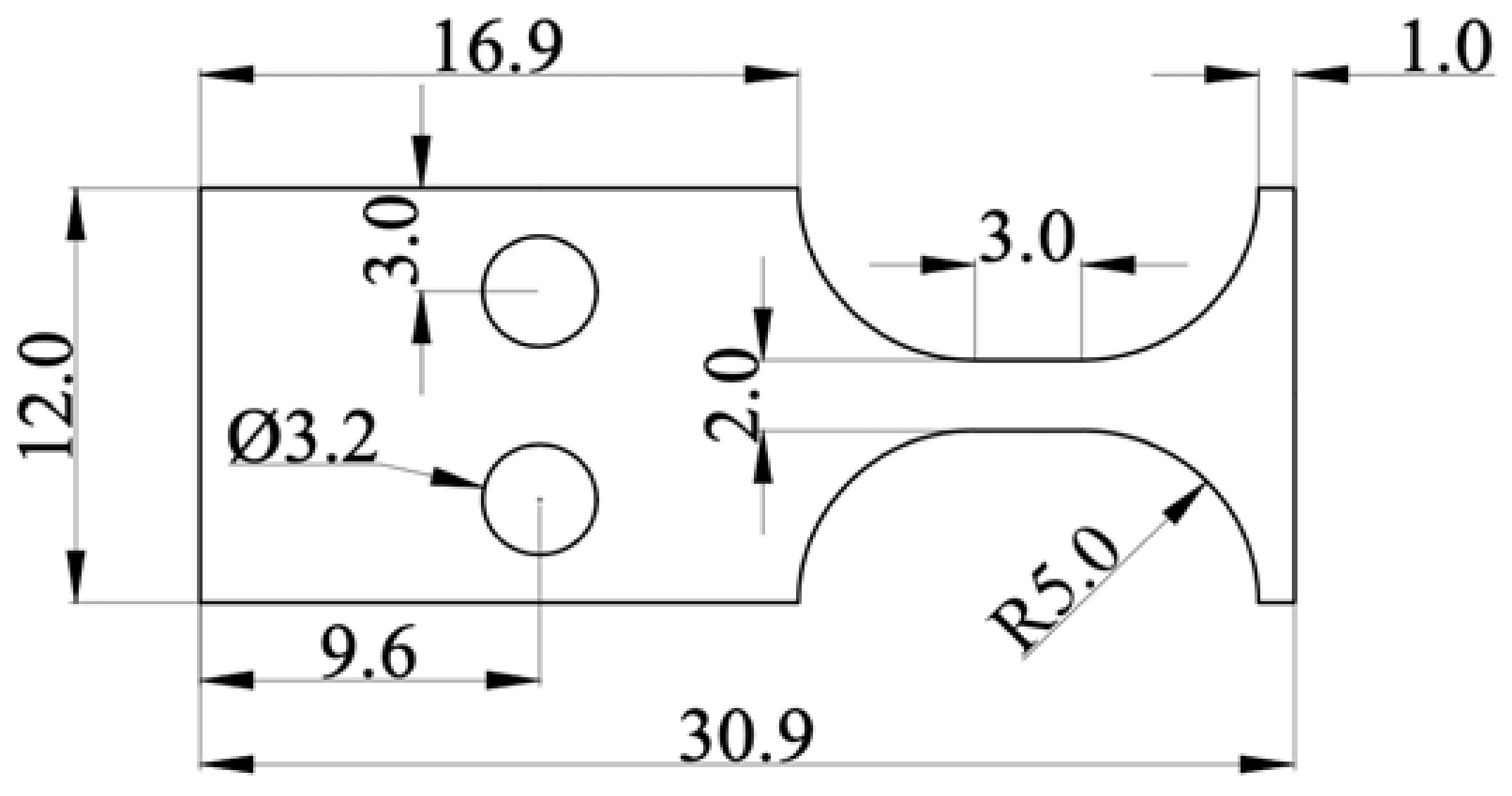
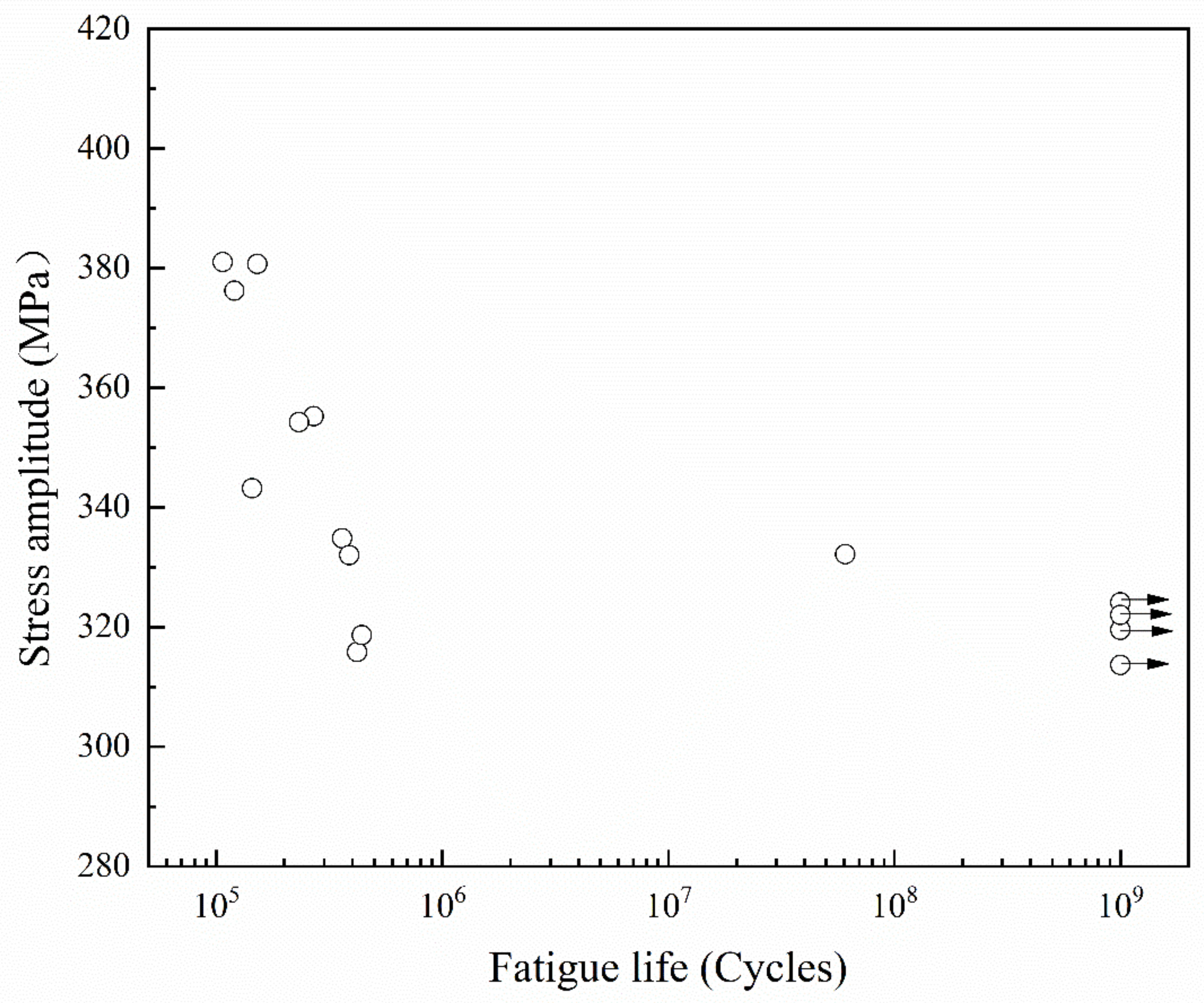

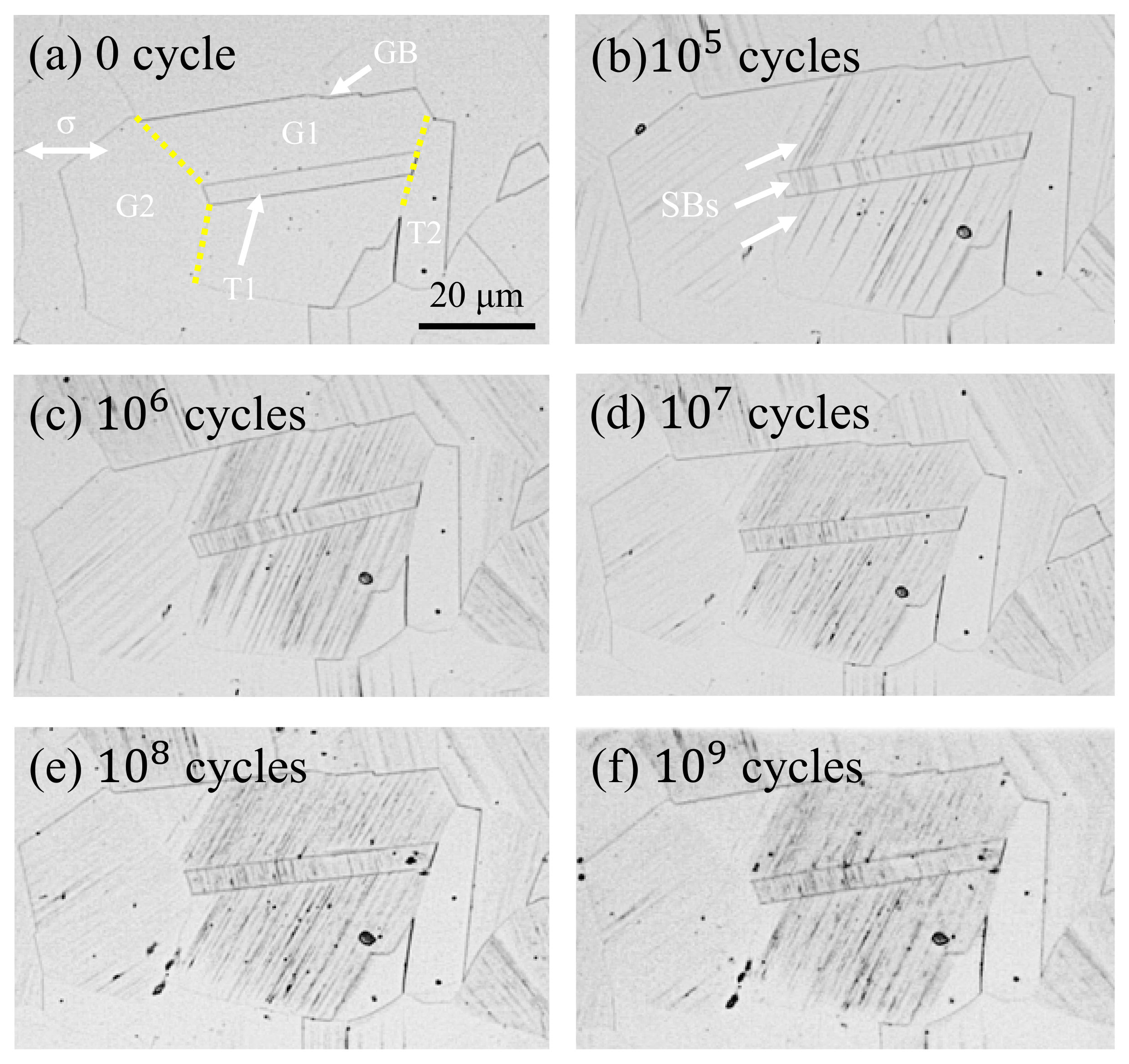
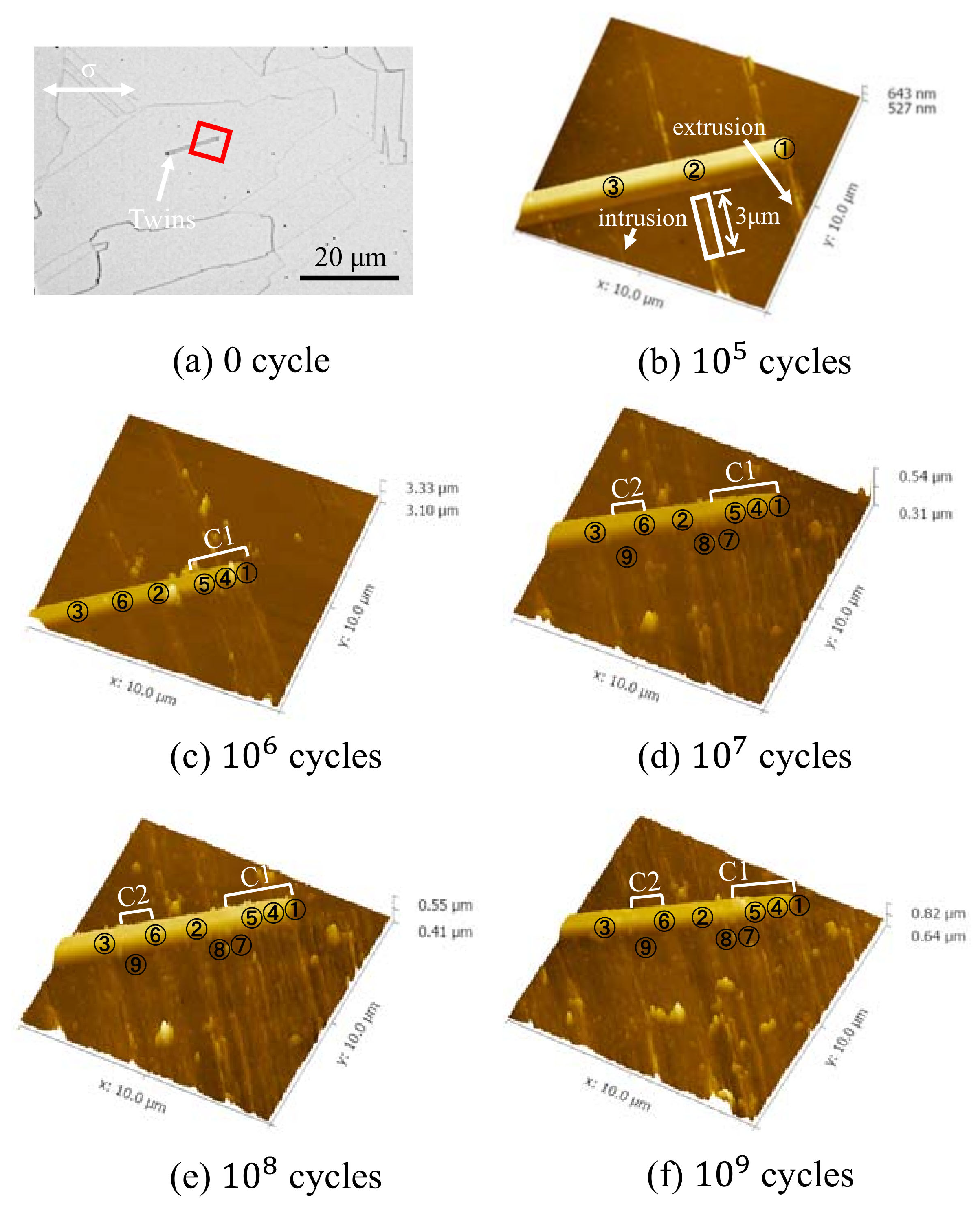
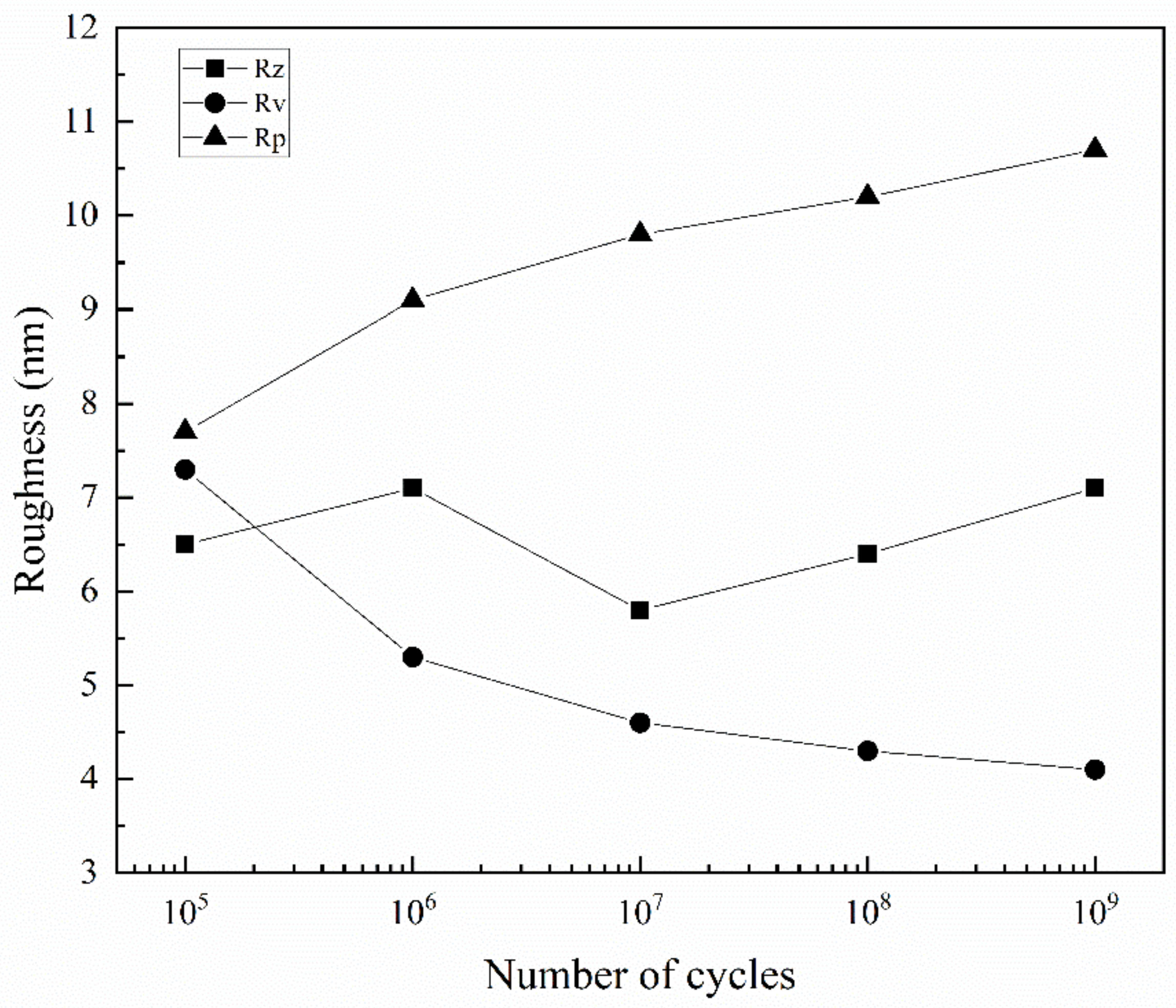
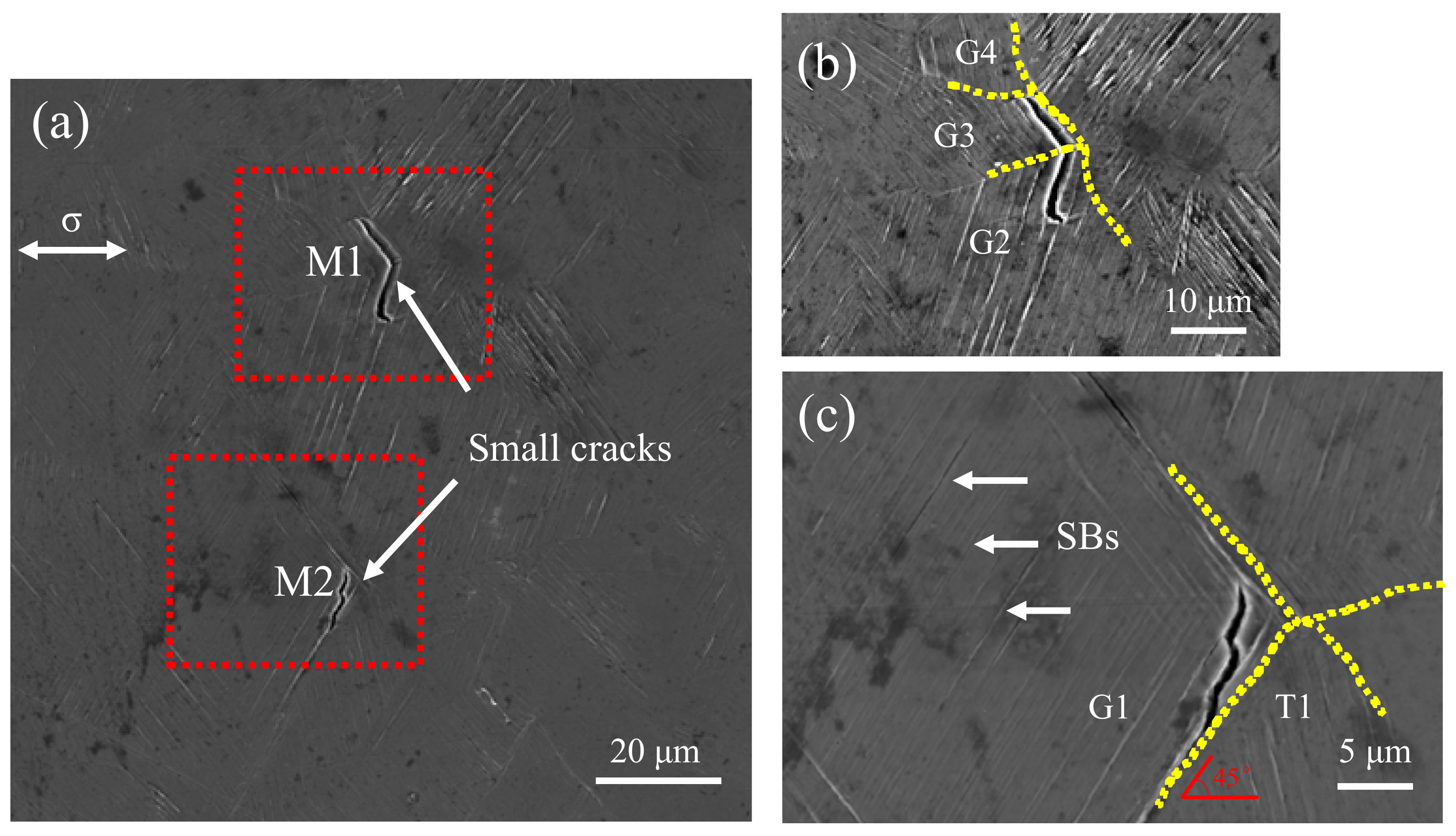
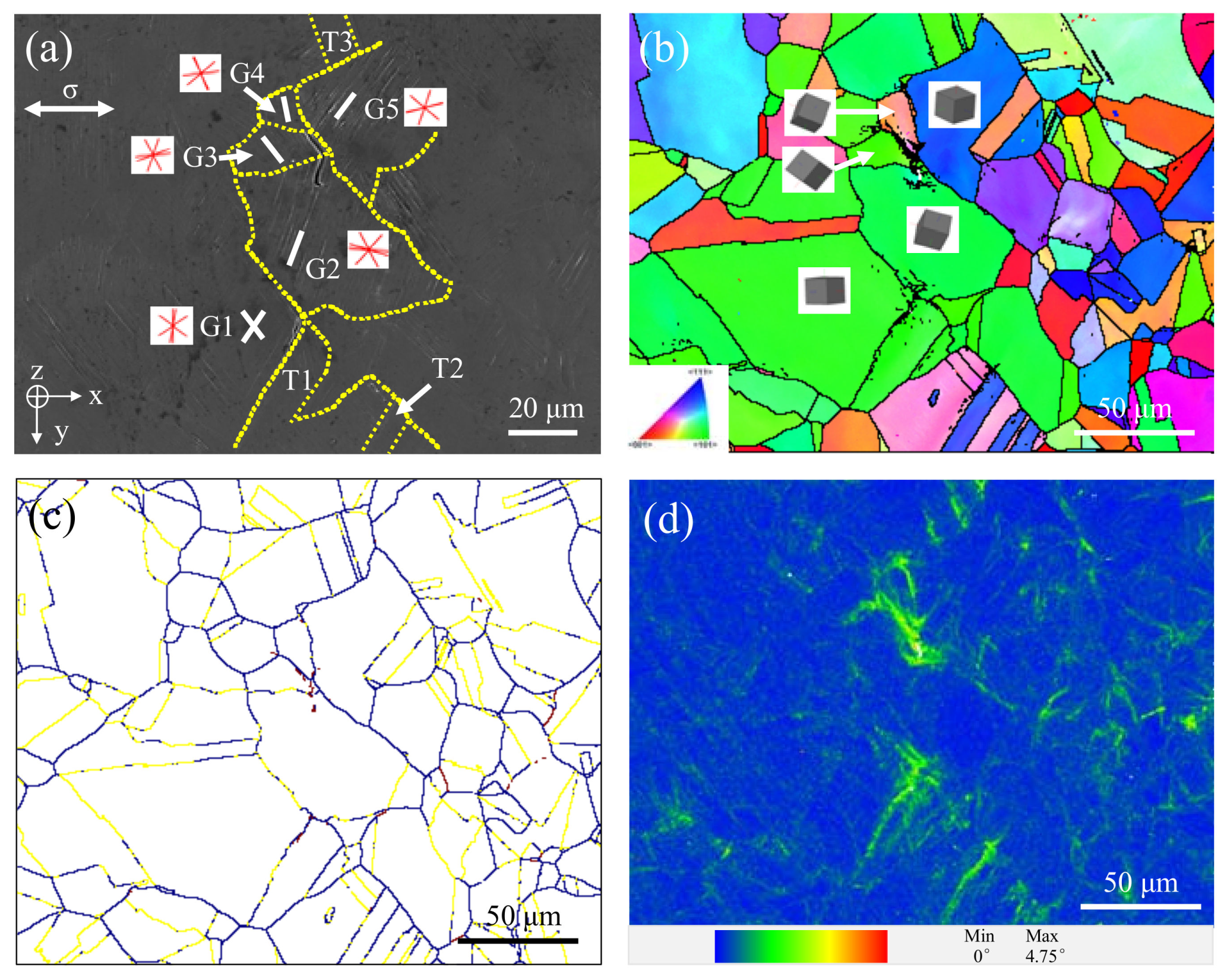
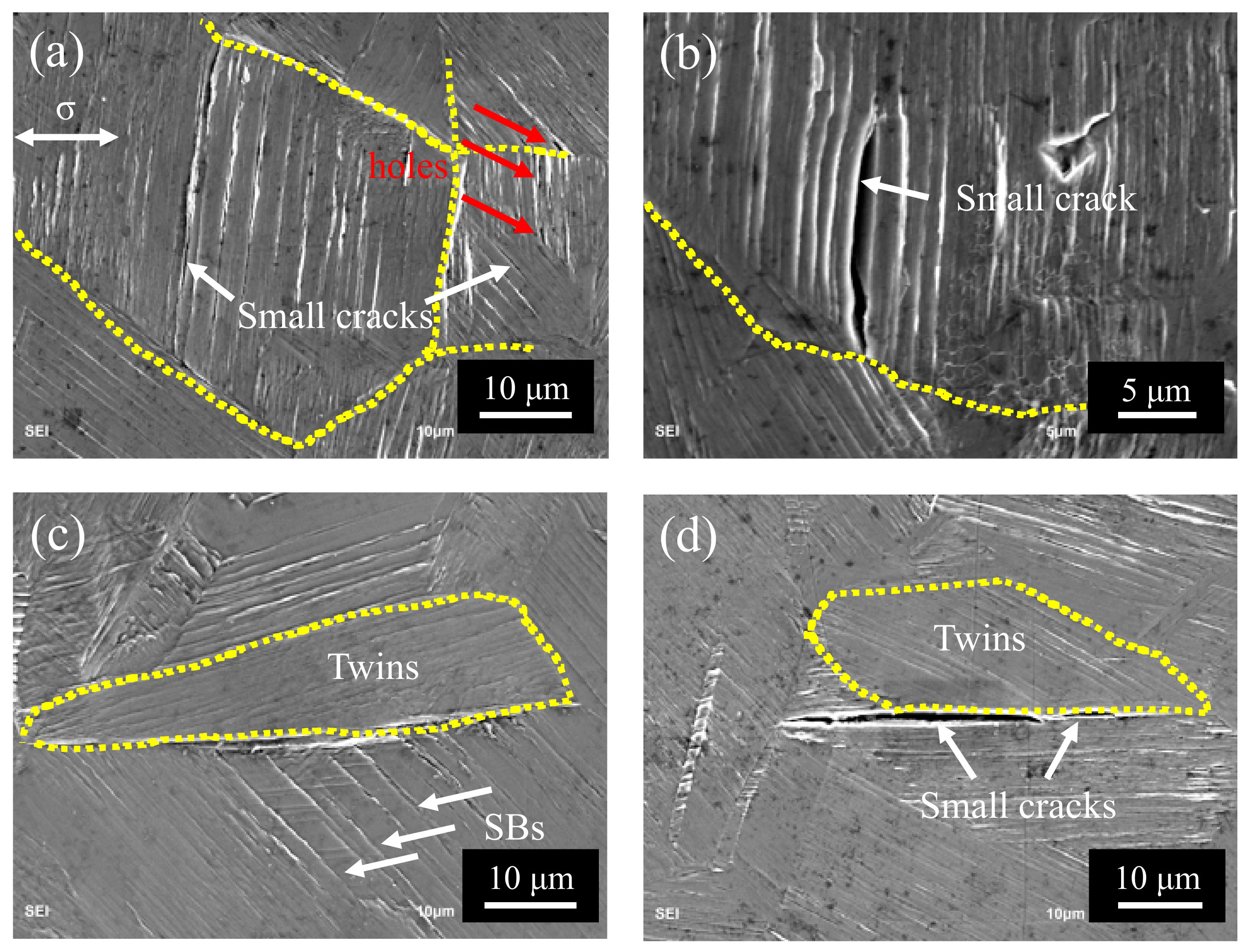
| Yield Stress (0.02%; MPa) | Tensile Strength (MPa) | Young’s Modulus (GPa) | Density (kg/m3) | Hardness (Hv) |
|---|---|---|---|---|
| 220 | 580 | 195 | 7990 | 141.1 |
Publisher’s Note: MDPI stays neutral with regard to jurisdictional claims in published maps and institutional affiliations. |
© 2020 by the authors. Licensee MDPI, Basel, Switzerland. This article is an open access article distributed under the terms and conditions of the Creative Commons Attribution (CC BY) license (http://creativecommons.org/licenses/by/4.0/).
Share and Cite
Hu, Y.; Chen, Y.; He, C.; Liu, Y.; Wang, Q.; Wang, C. Bending Fatigue Behavior of 316L Stainless Steel up to Very High Cycle Fatigue Regime. Materials 2020, 13, 4820. https://doi.org/10.3390/ma13214820
Hu Y, Chen Y, He C, Liu Y, Wang Q, Wang C. Bending Fatigue Behavior of 316L Stainless Steel up to Very High Cycle Fatigue Regime. Materials. 2020; 13(21):4820. https://doi.org/10.3390/ma13214820
Chicago/Turabian StyleHu, Yongtao, Yao Chen, Chao He, Yongjie Liu, Qingyuan Wang, and Chong Wang. 2020. "Bending Fatigue Behavior of 316L Stainless Steel up to Very High Cycle Fatigue Regime" Materials 13, no. 21: 4820. https://doi.org/10.3390/ma13214820





